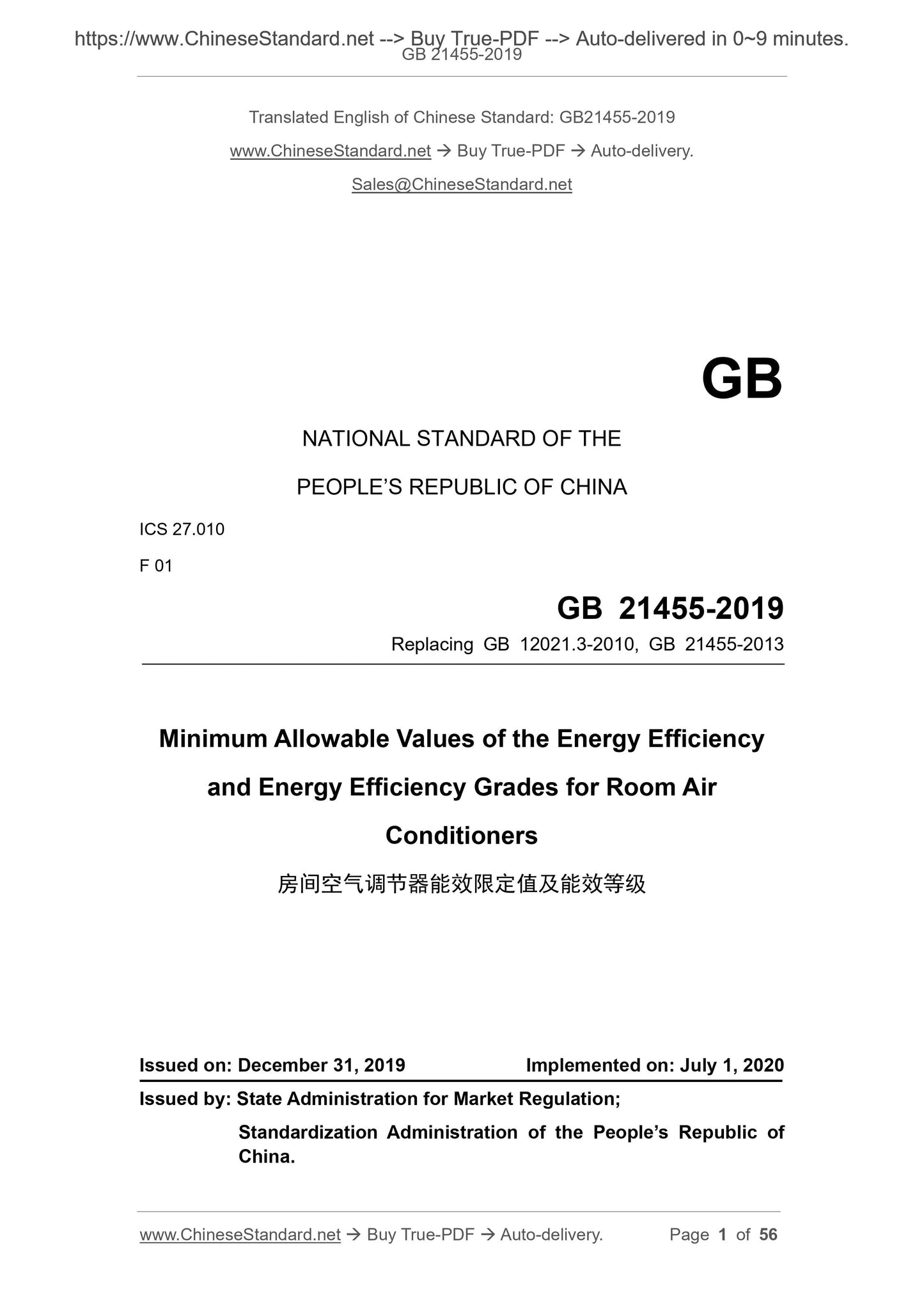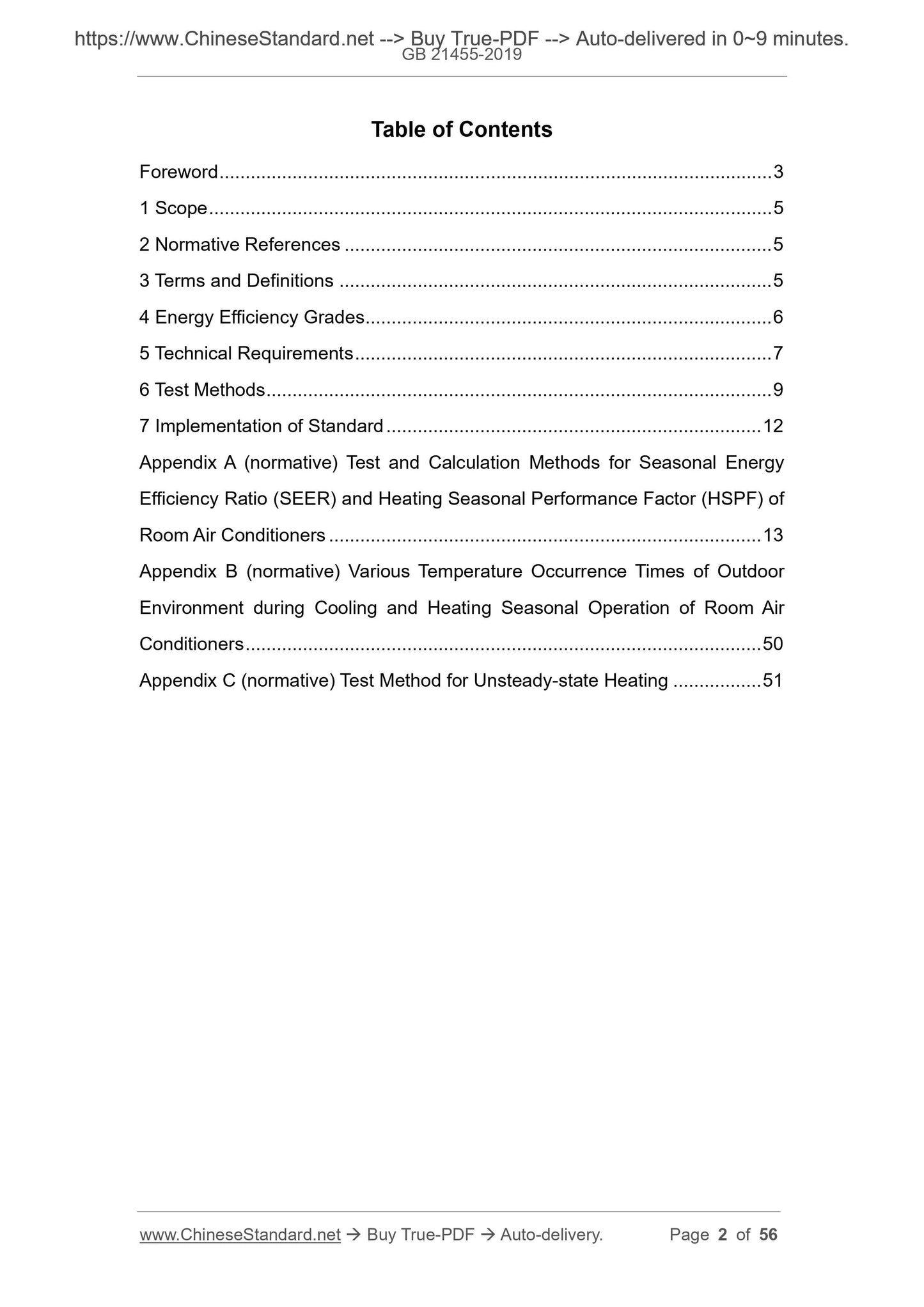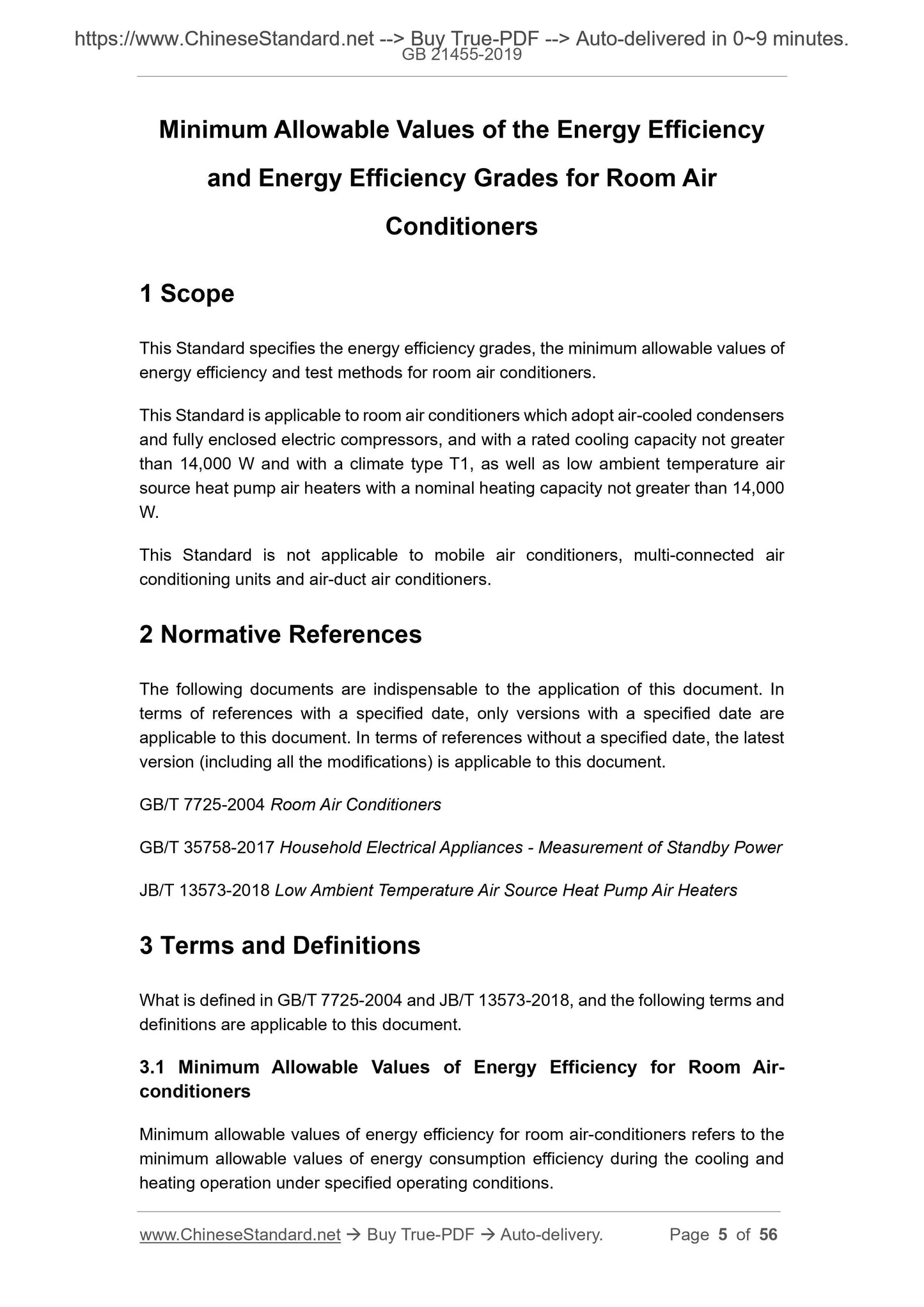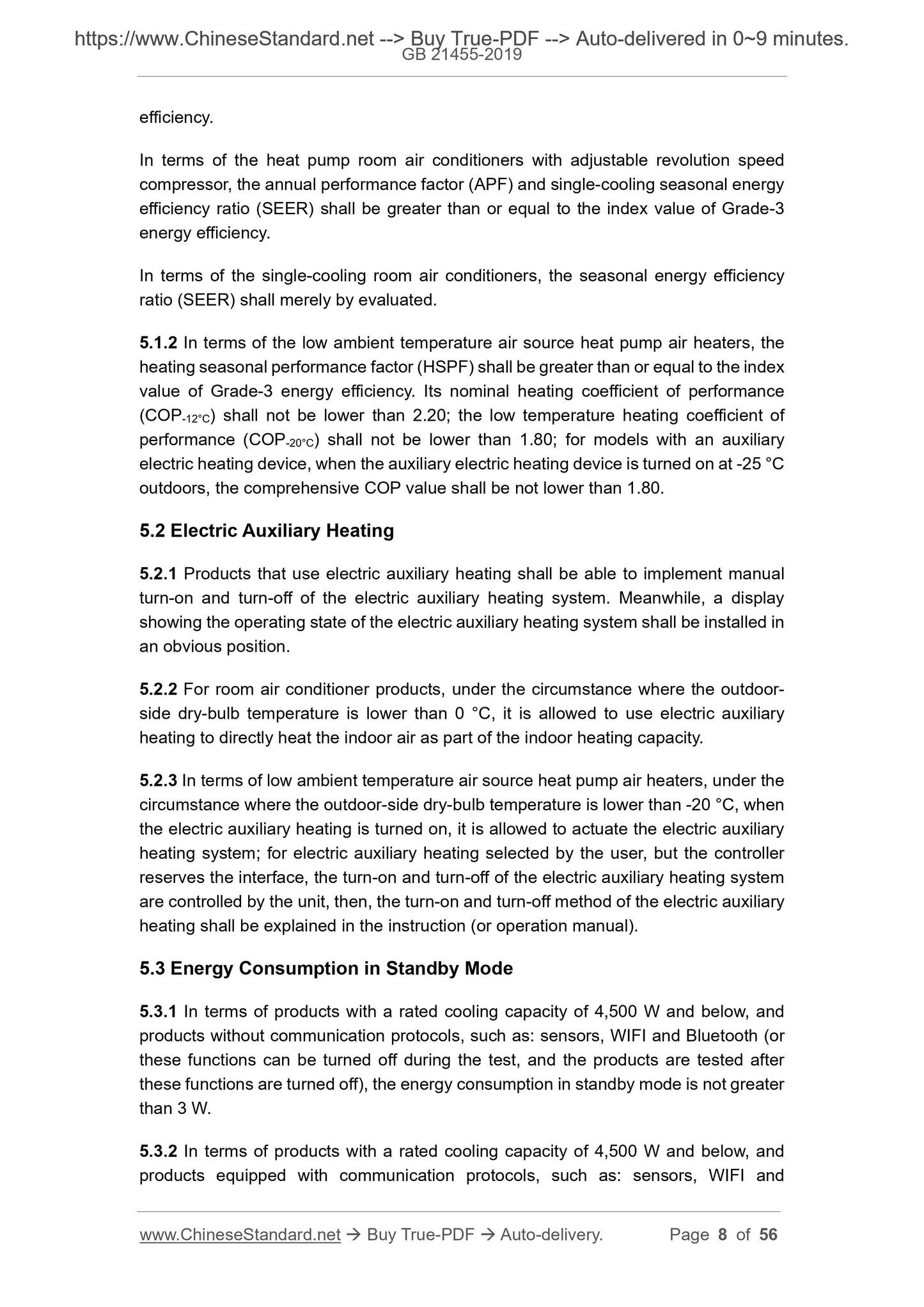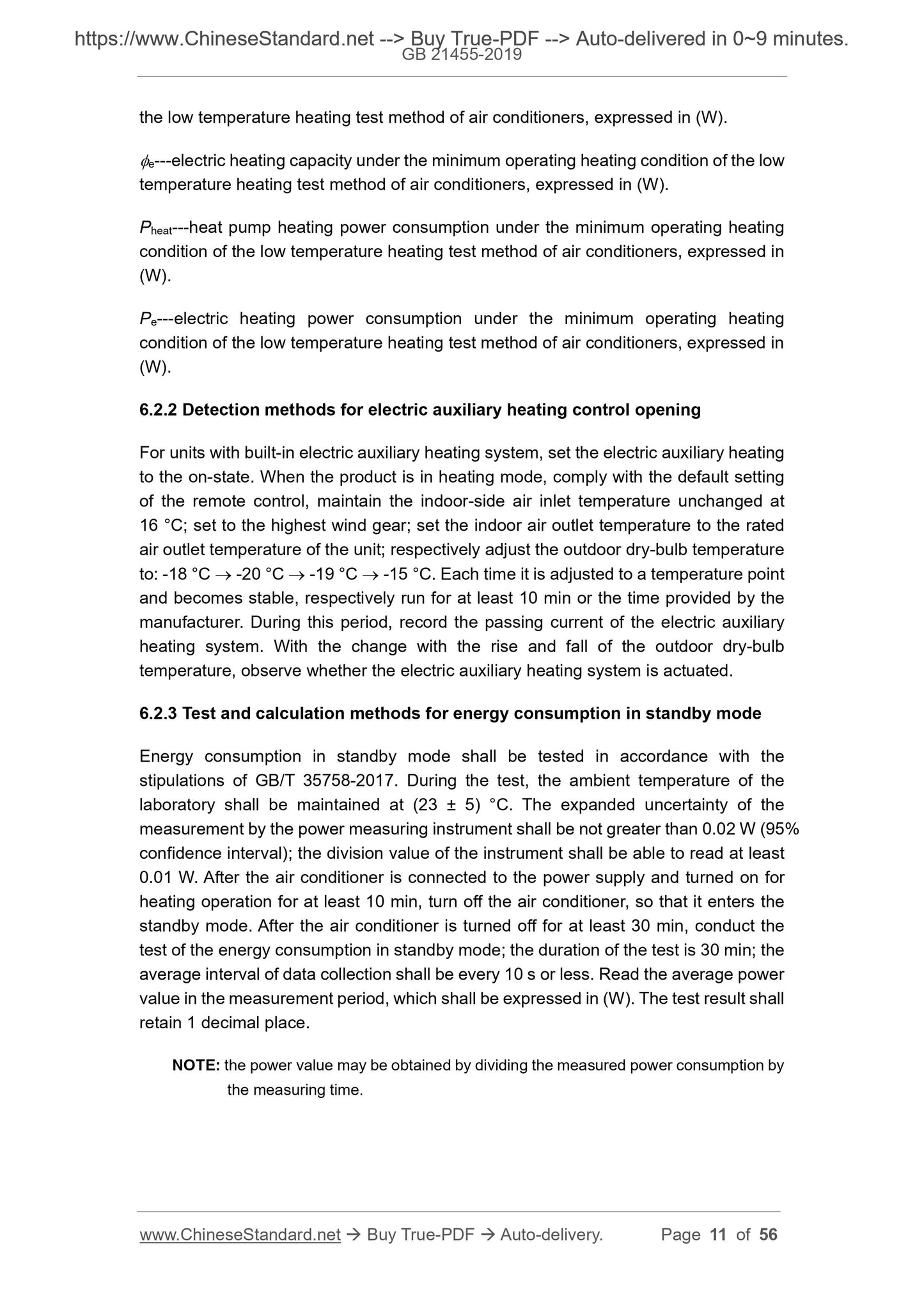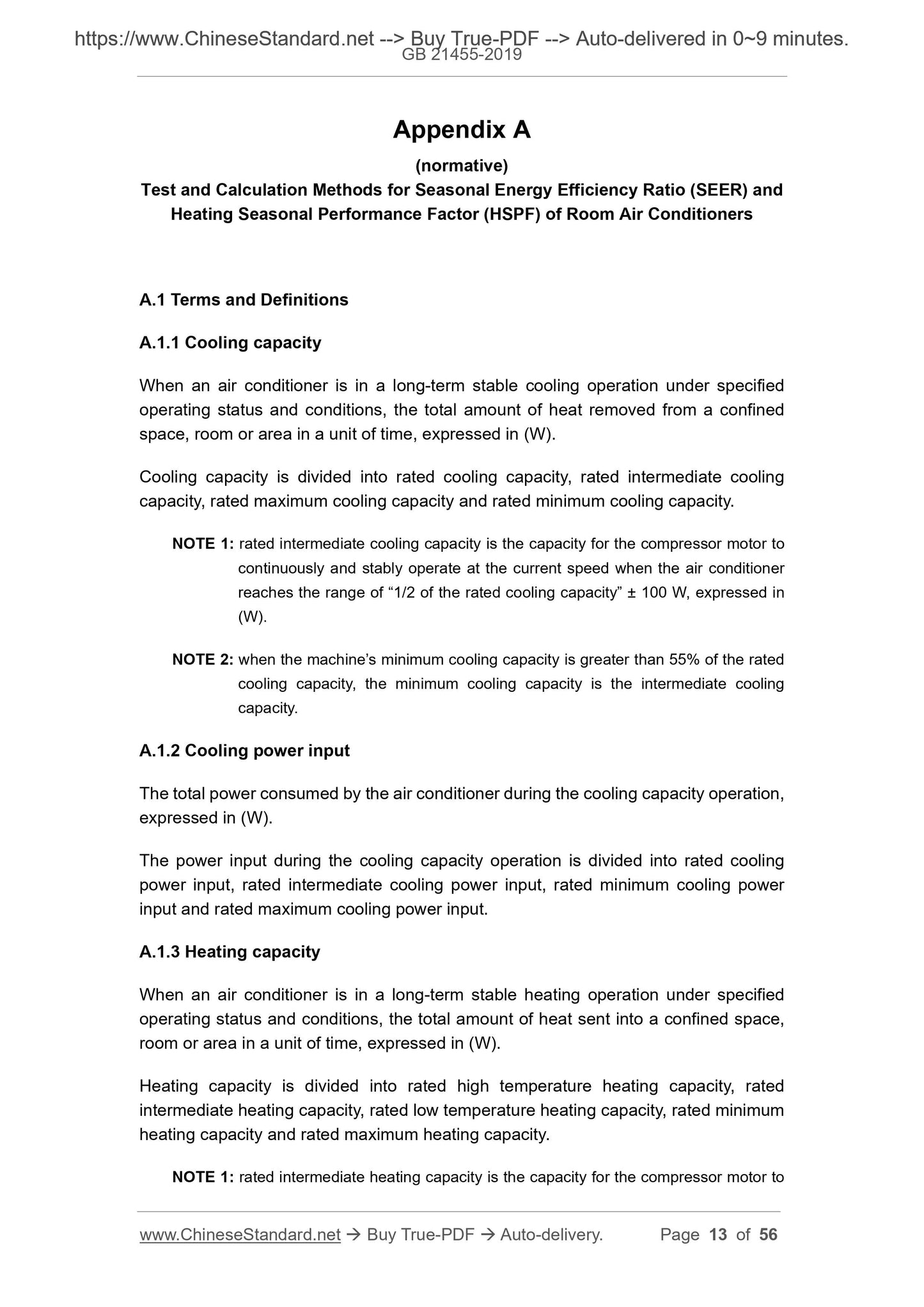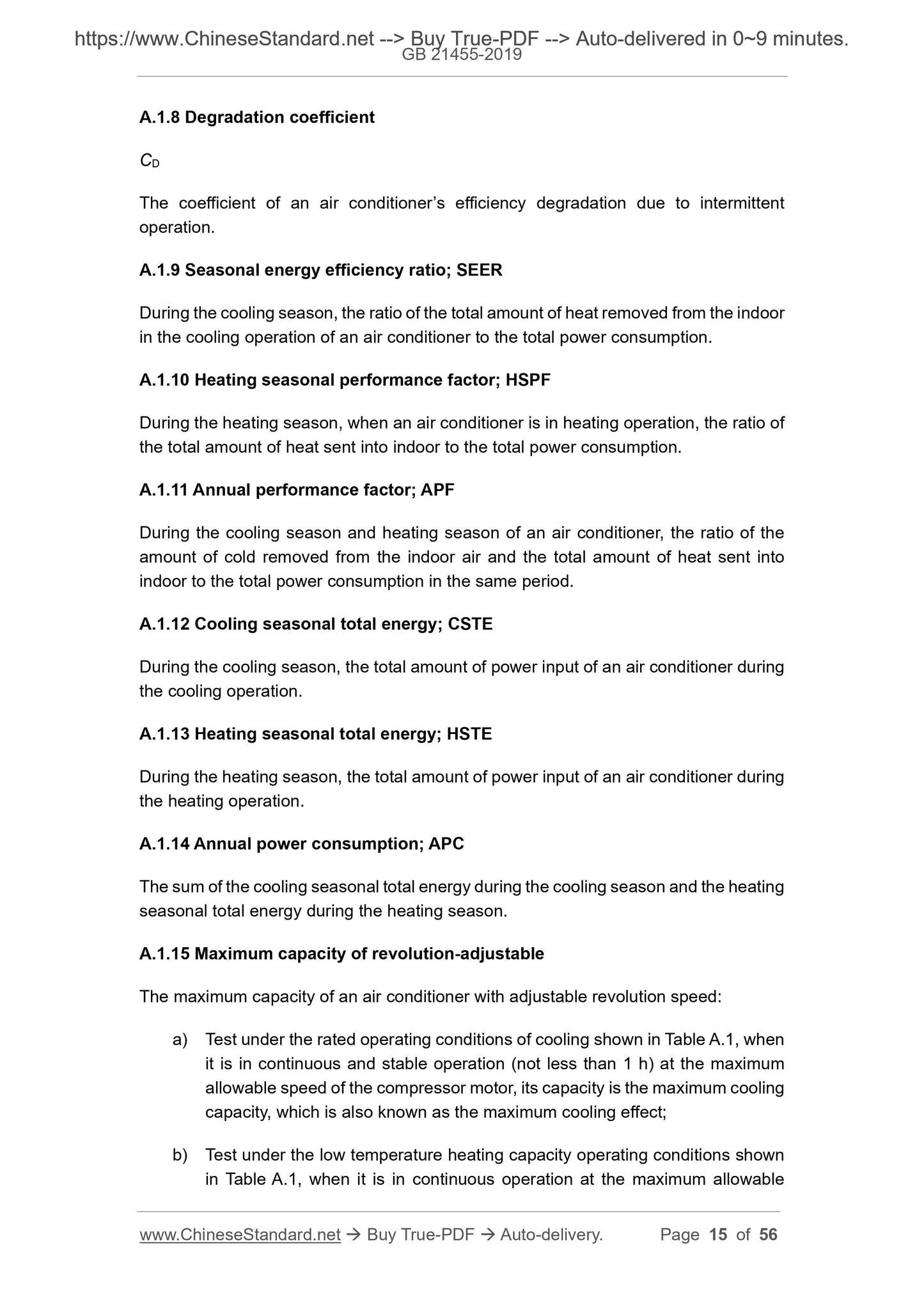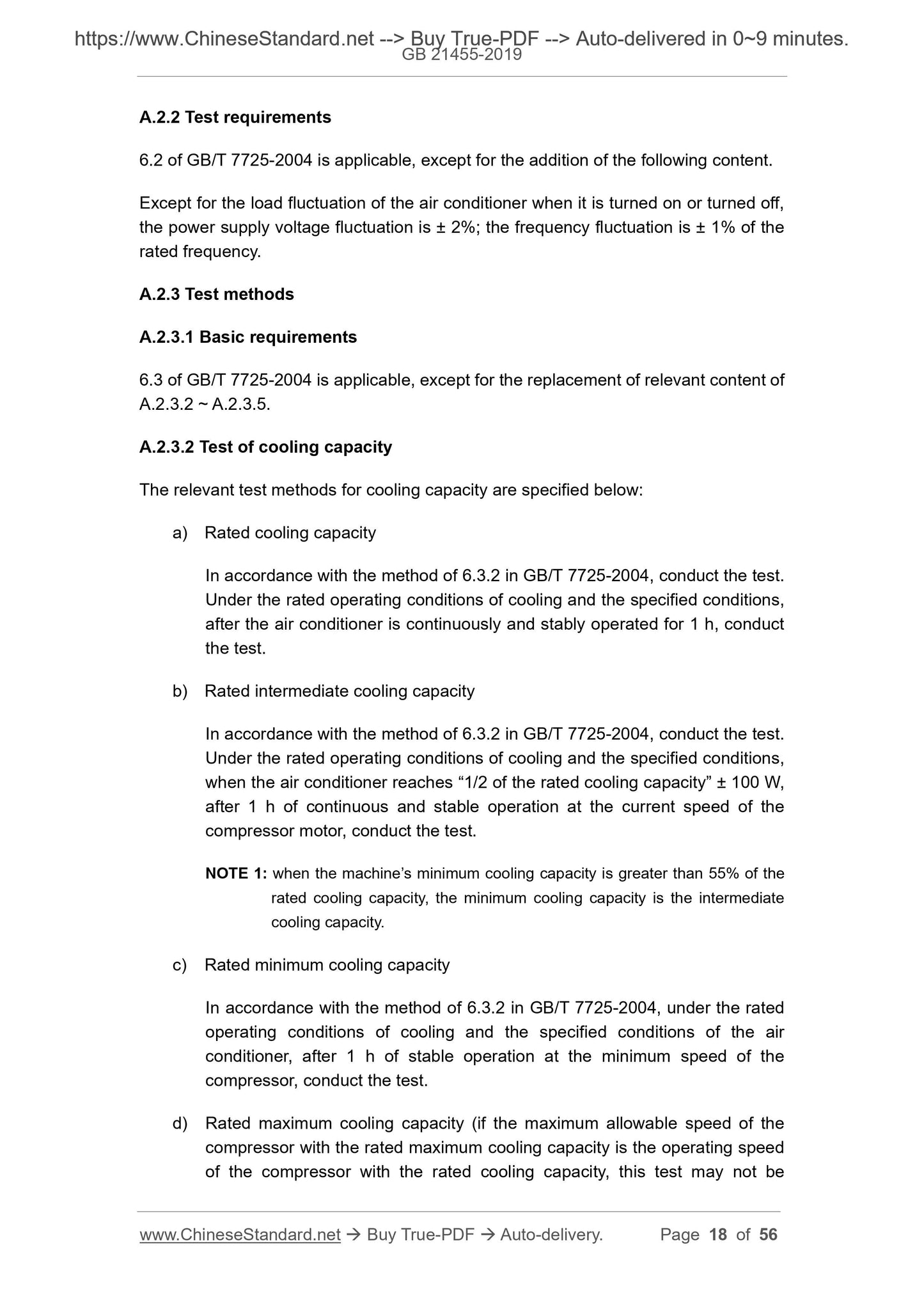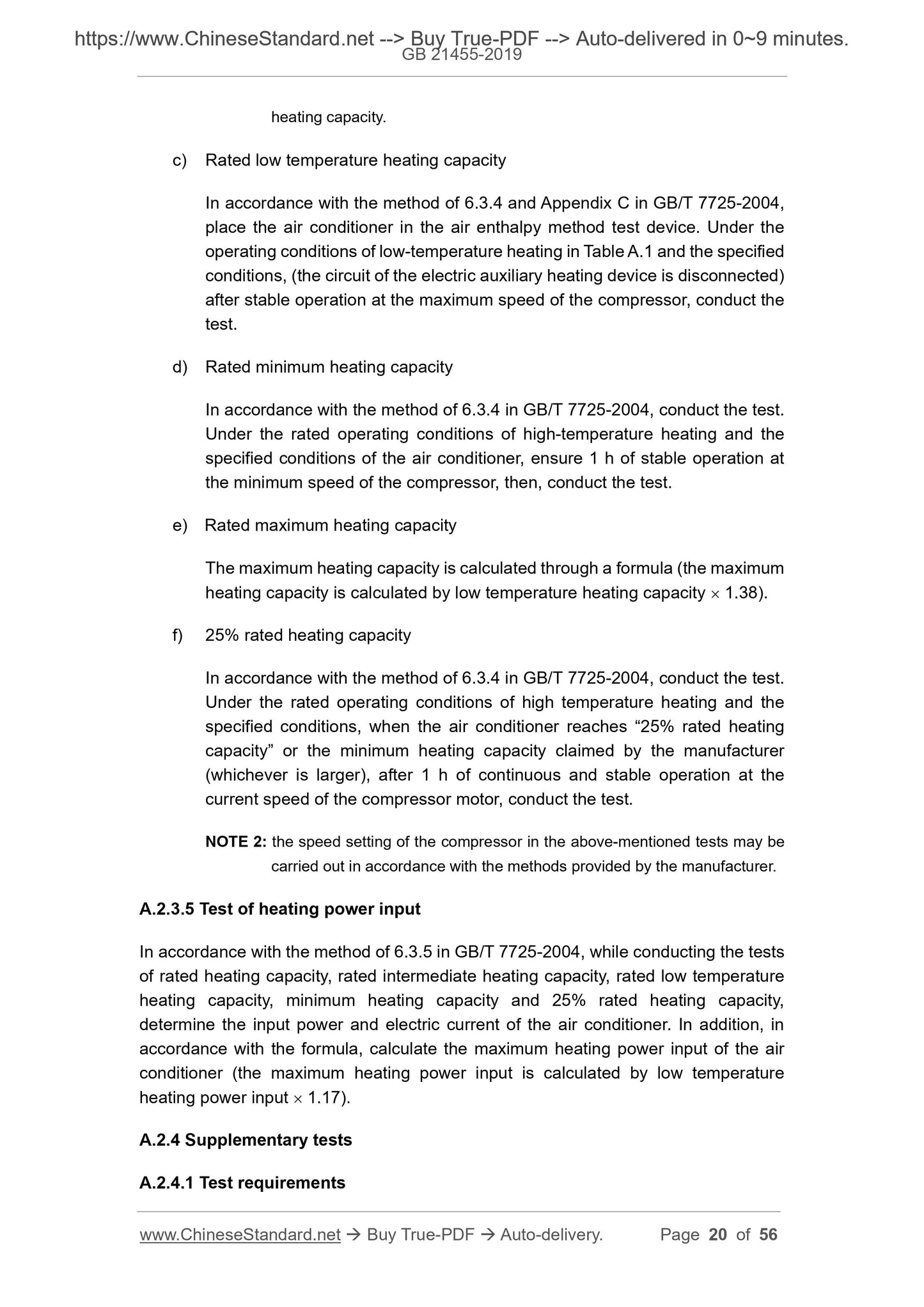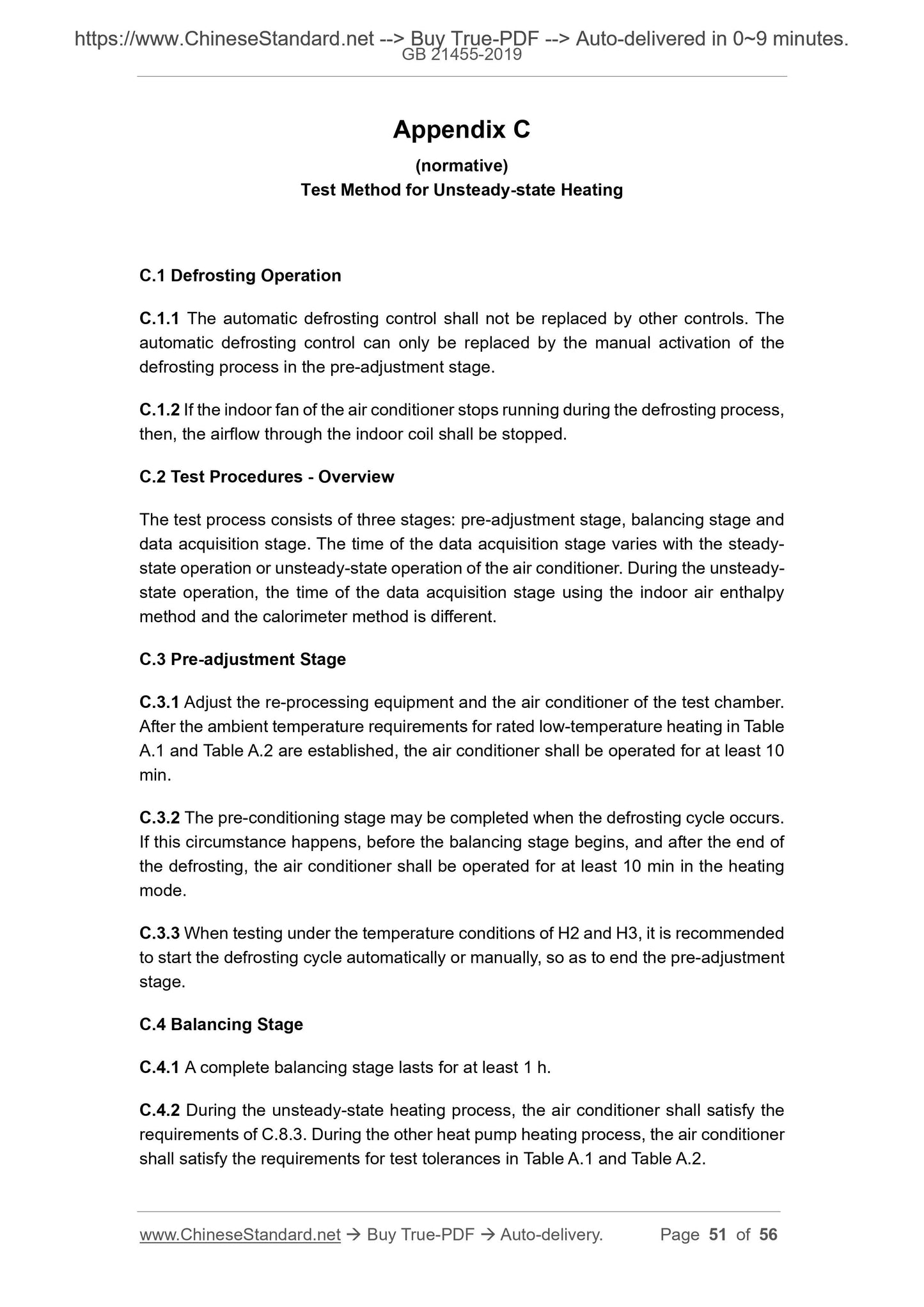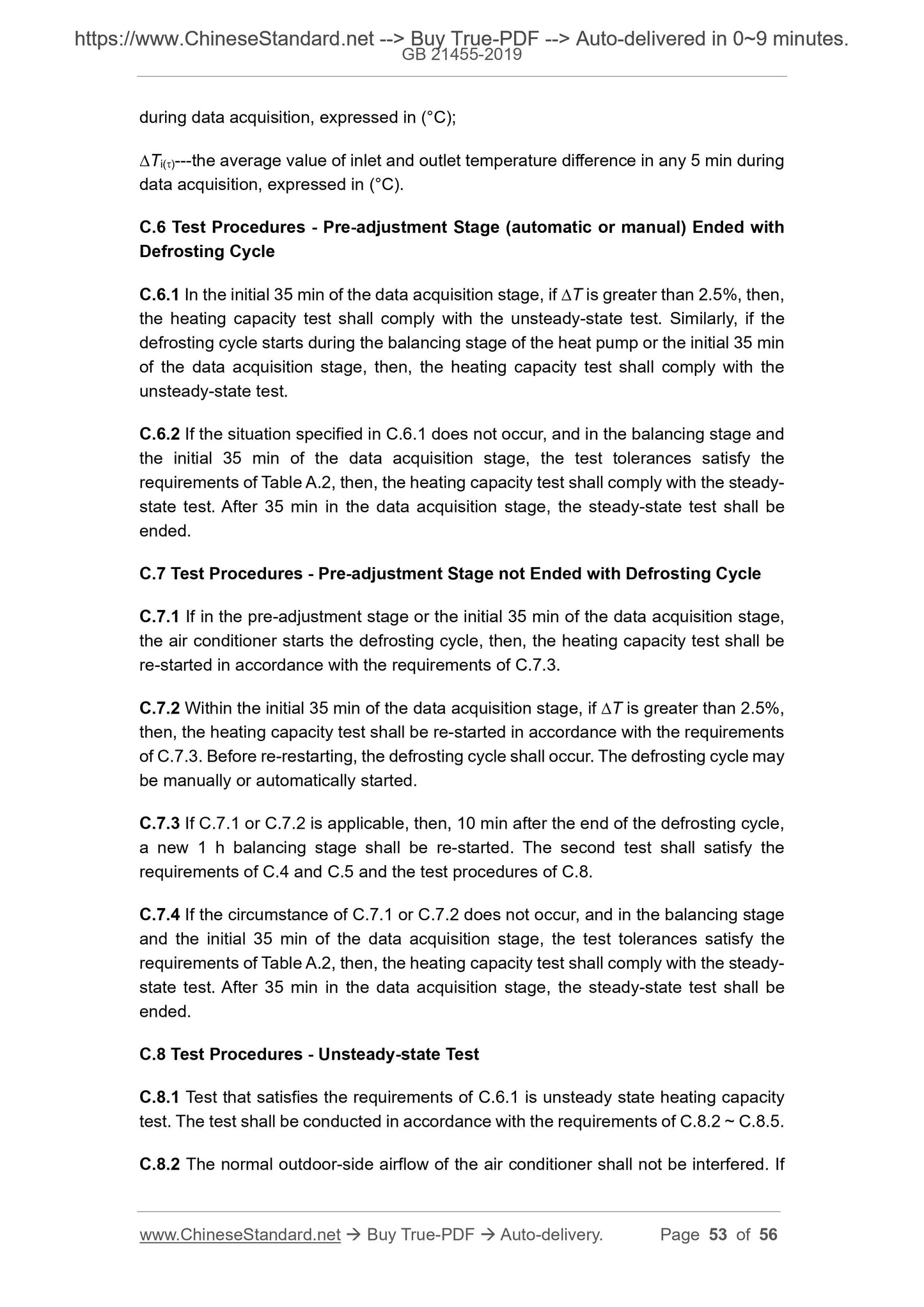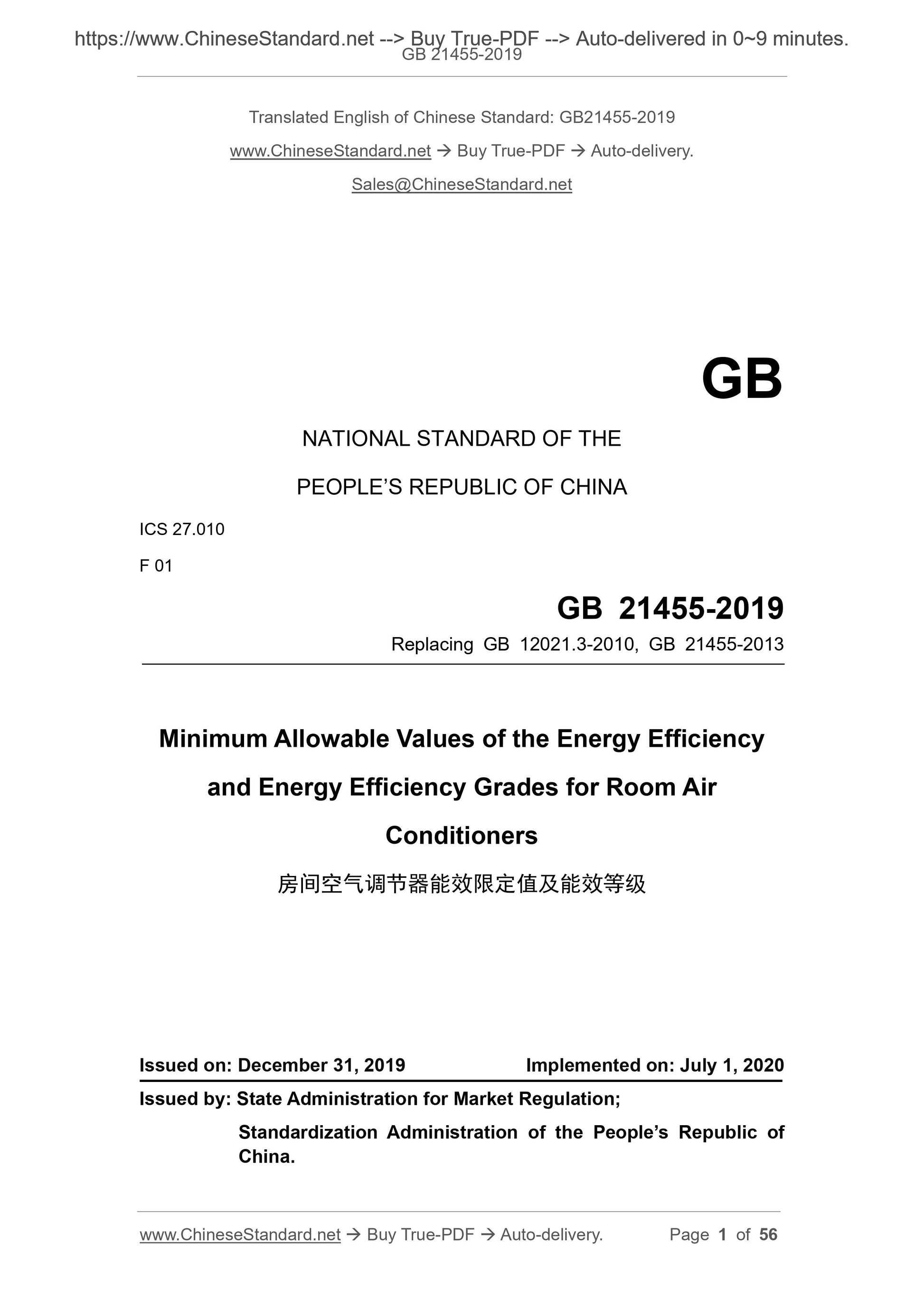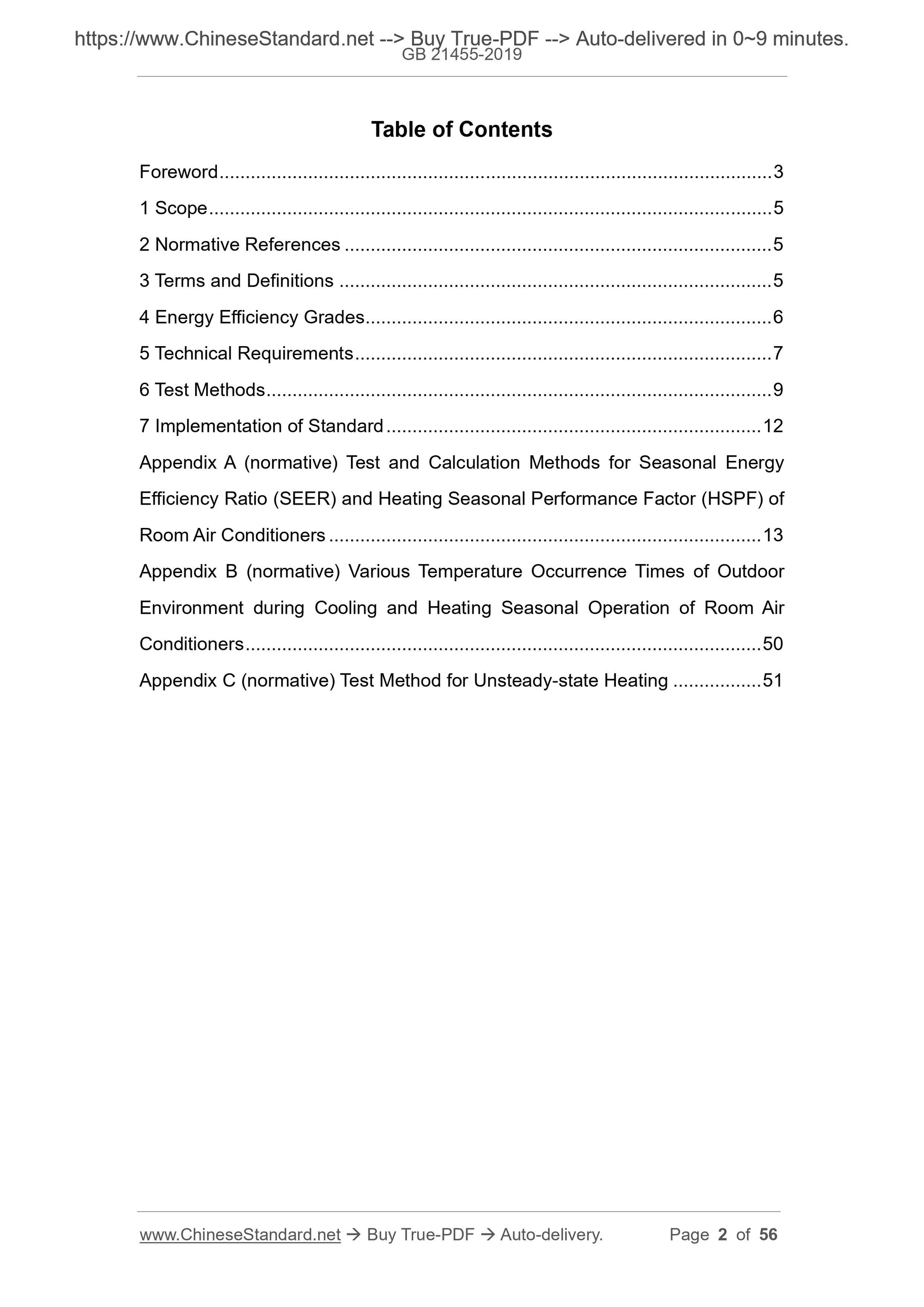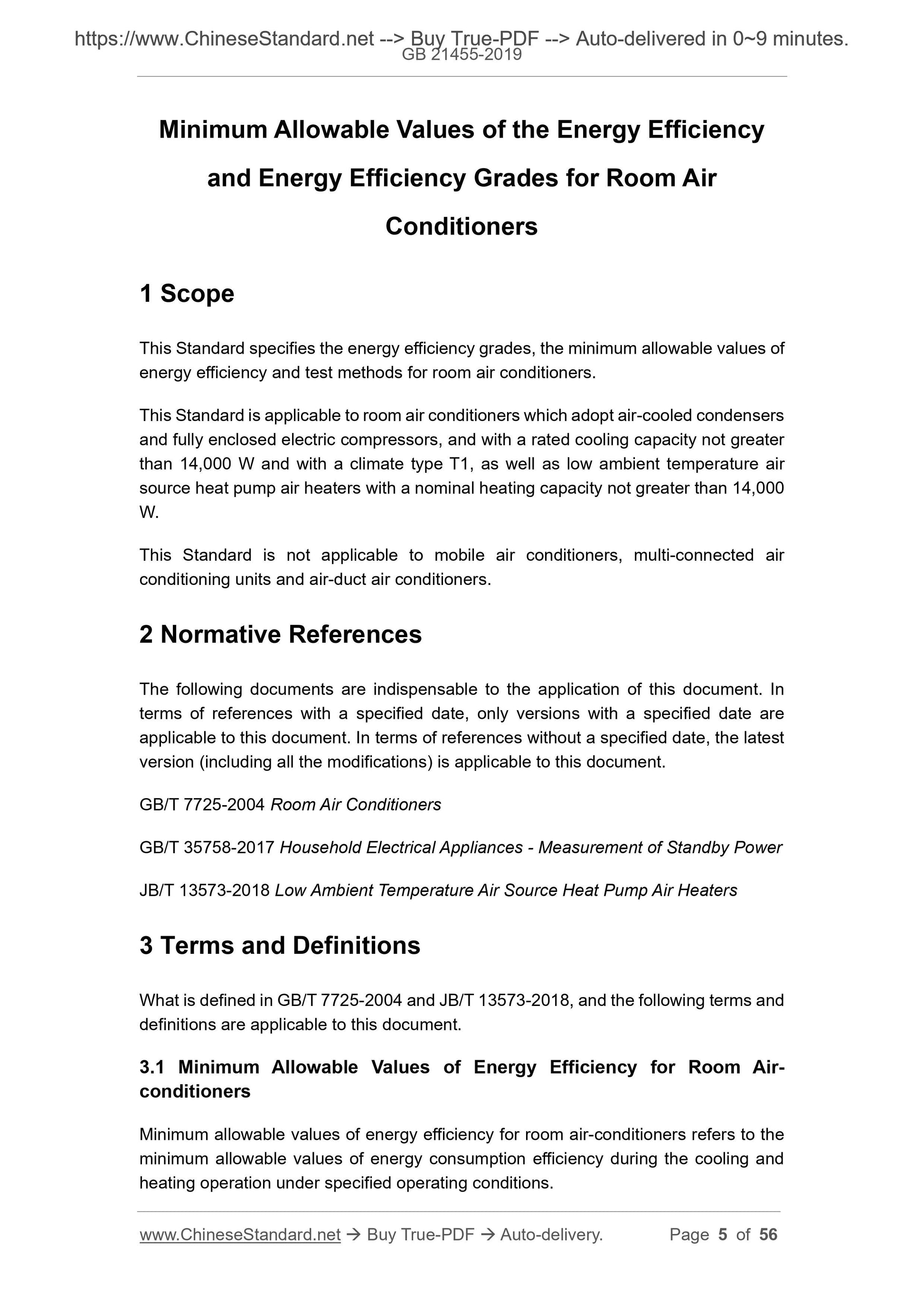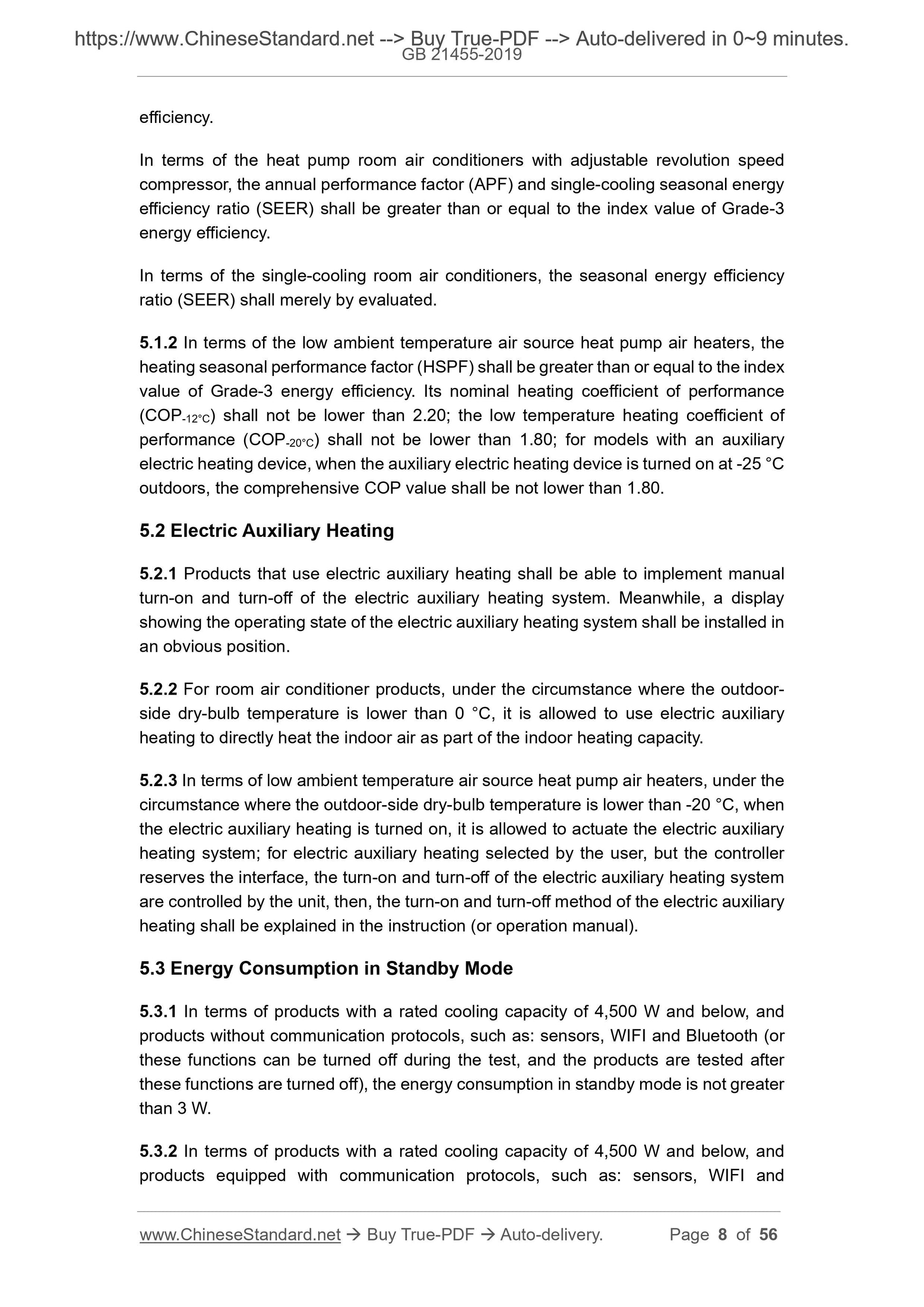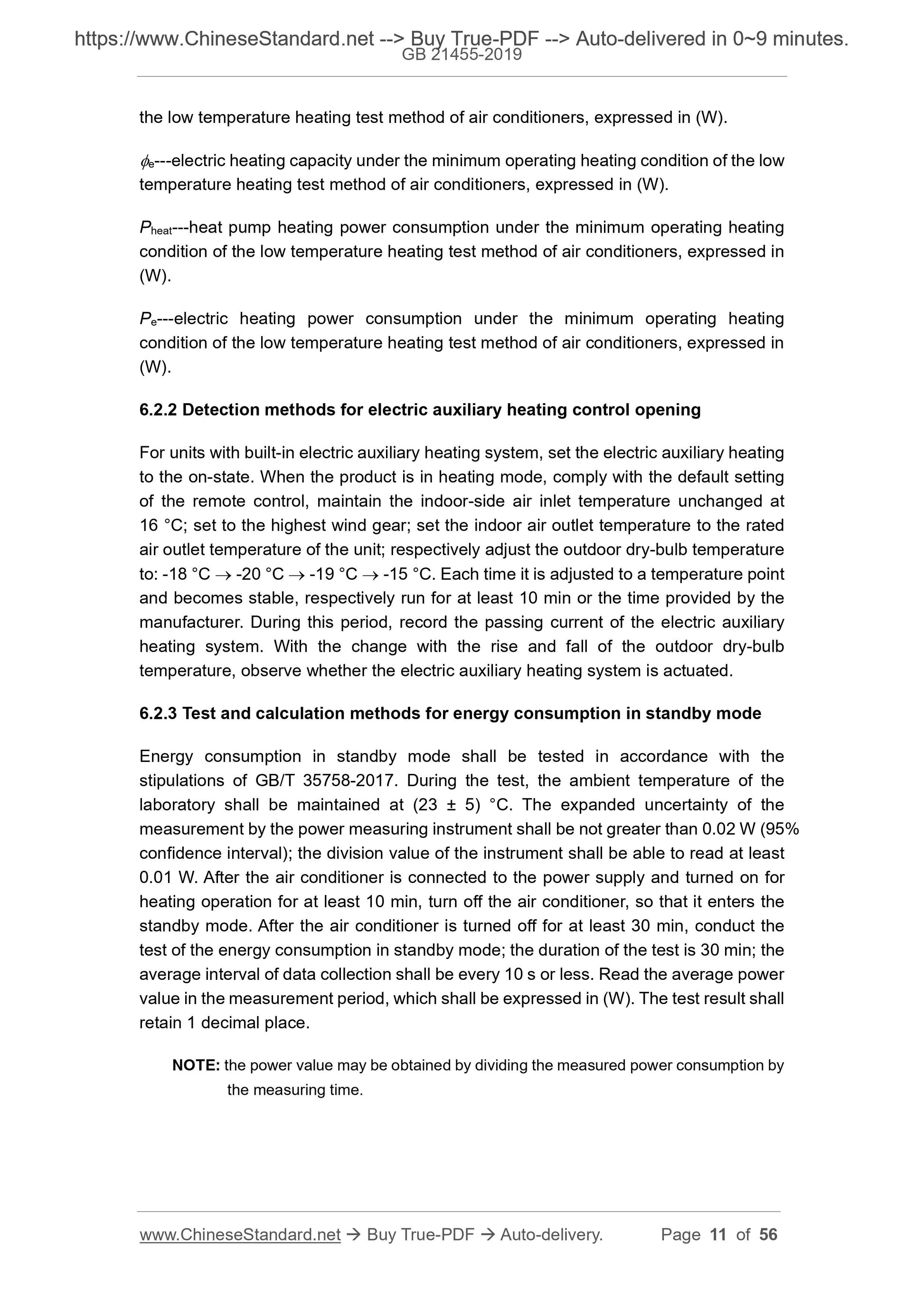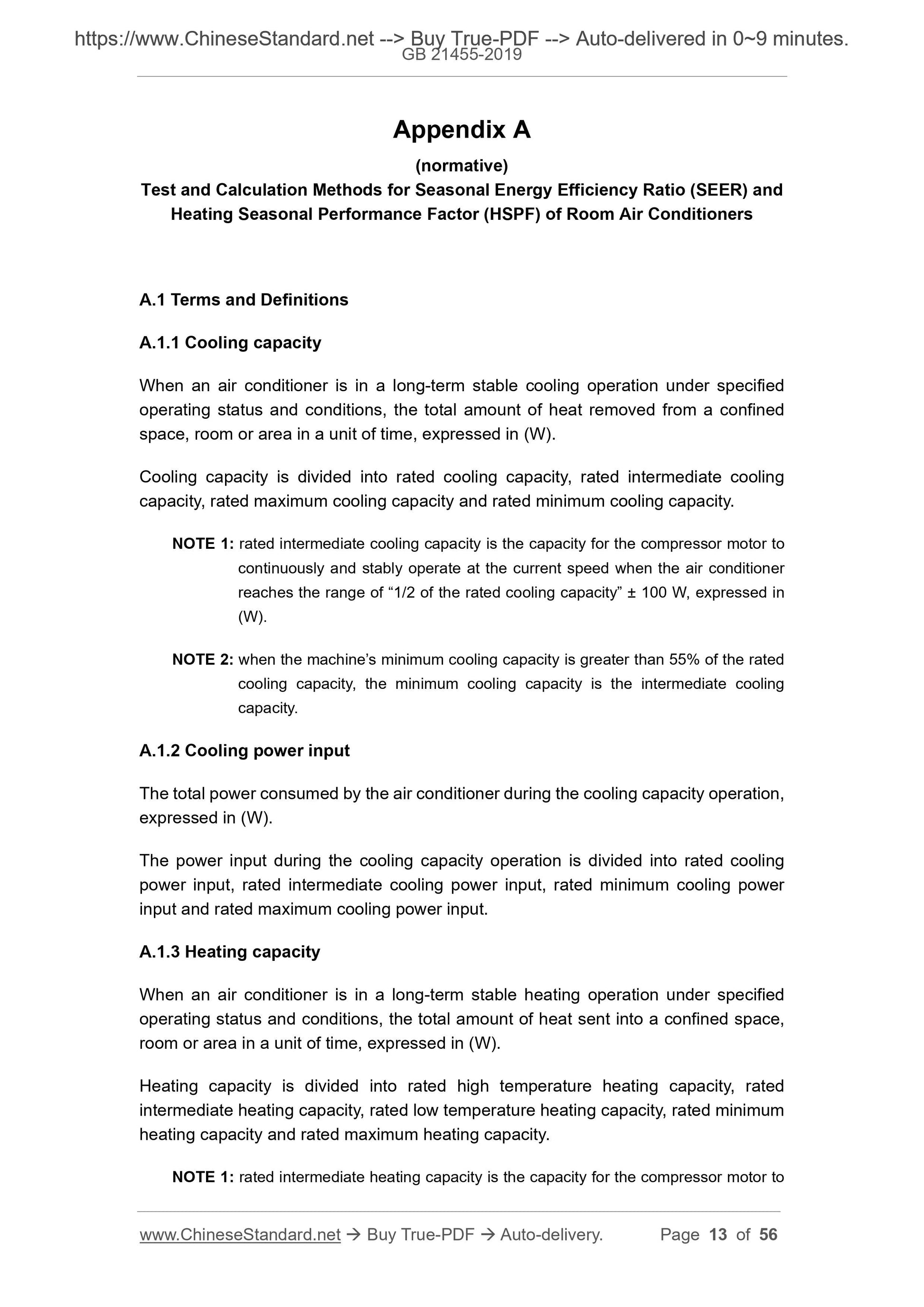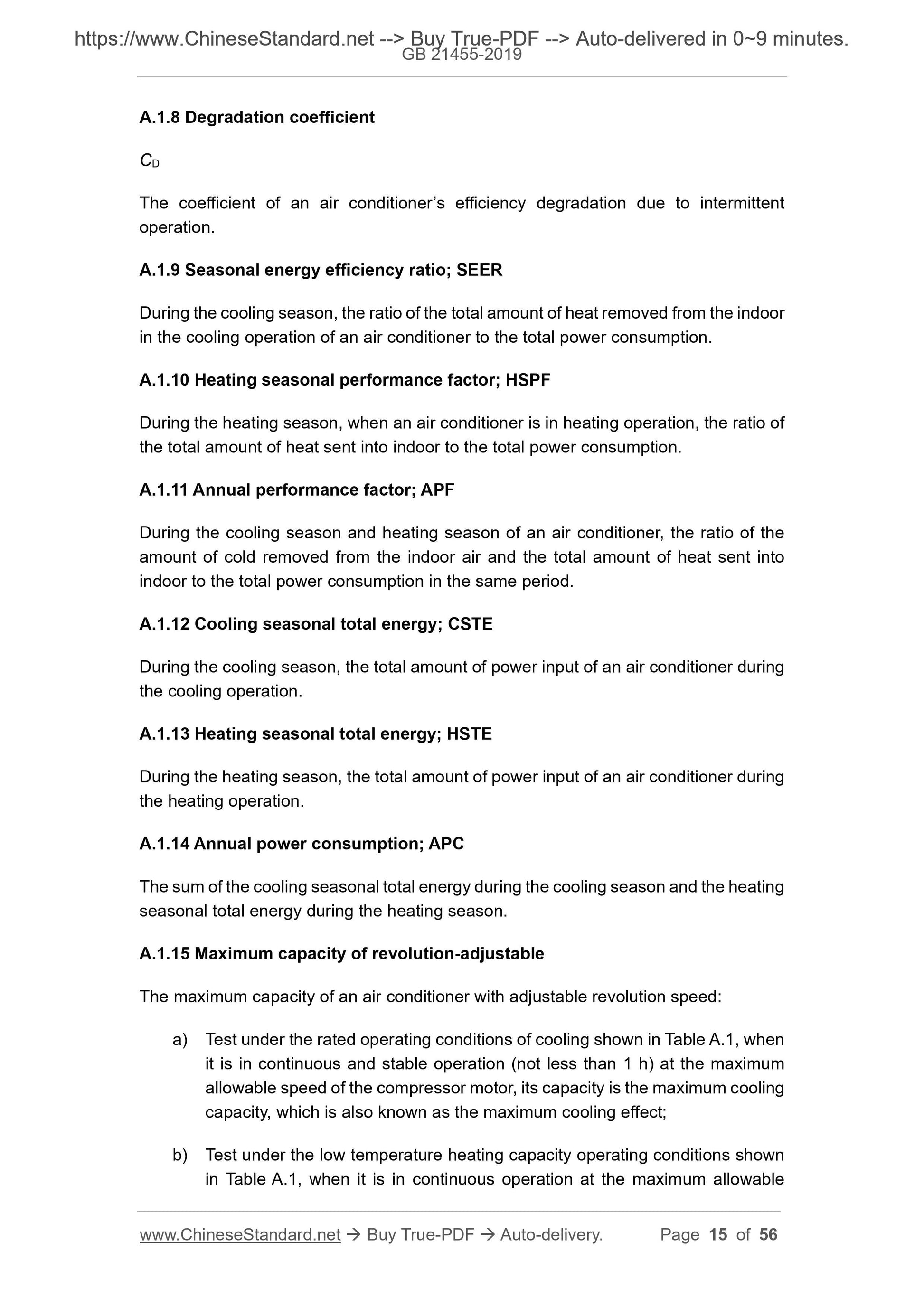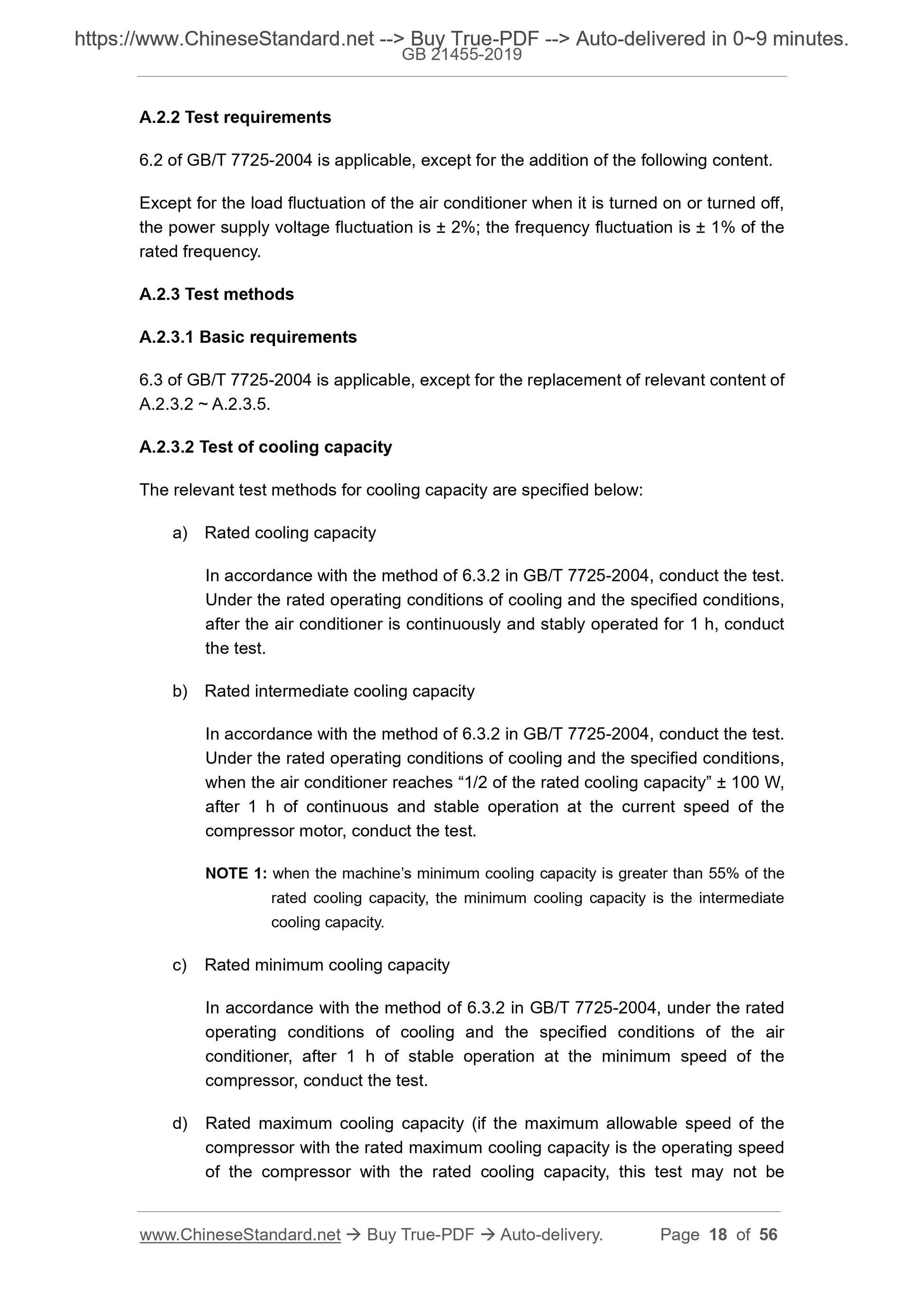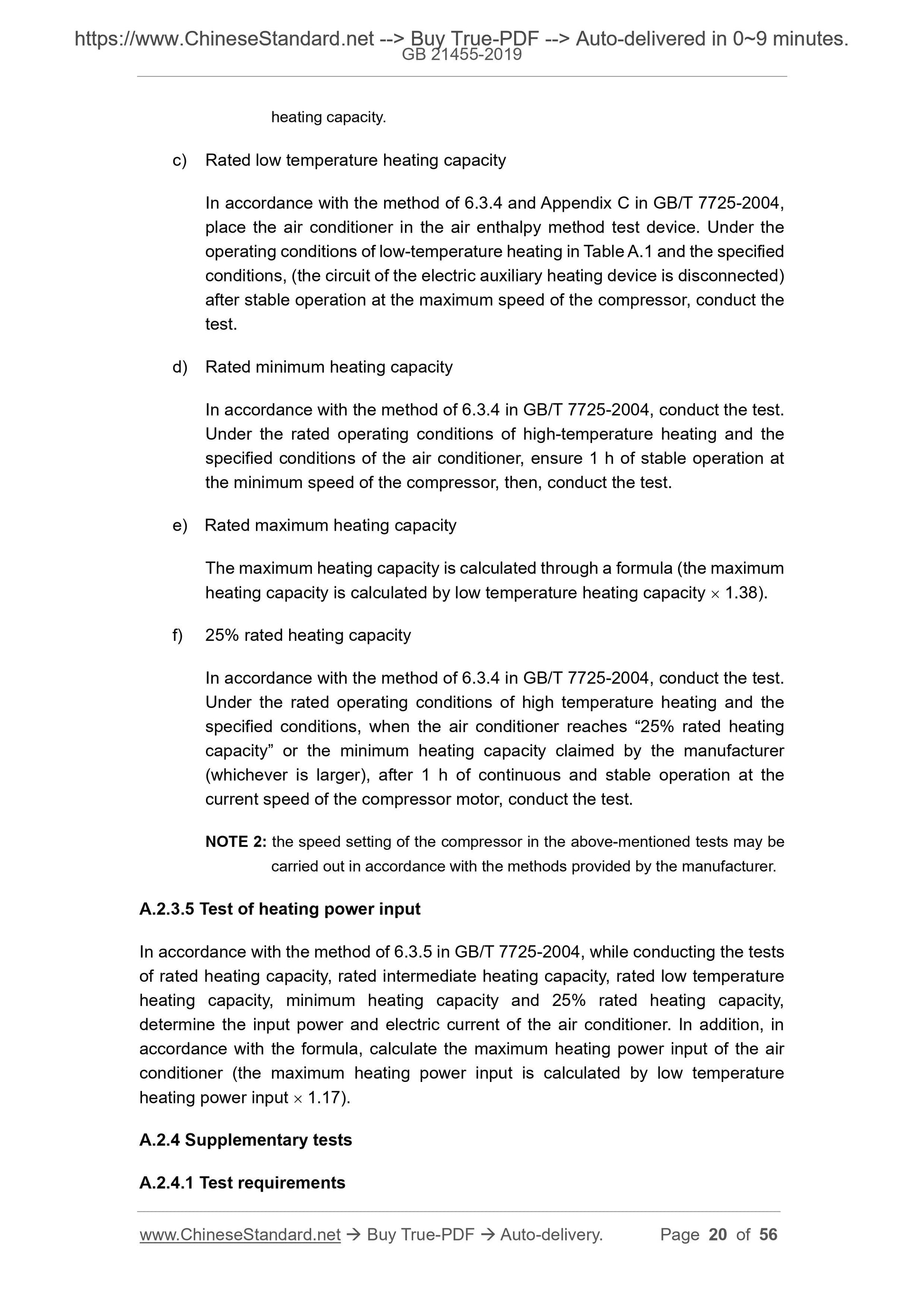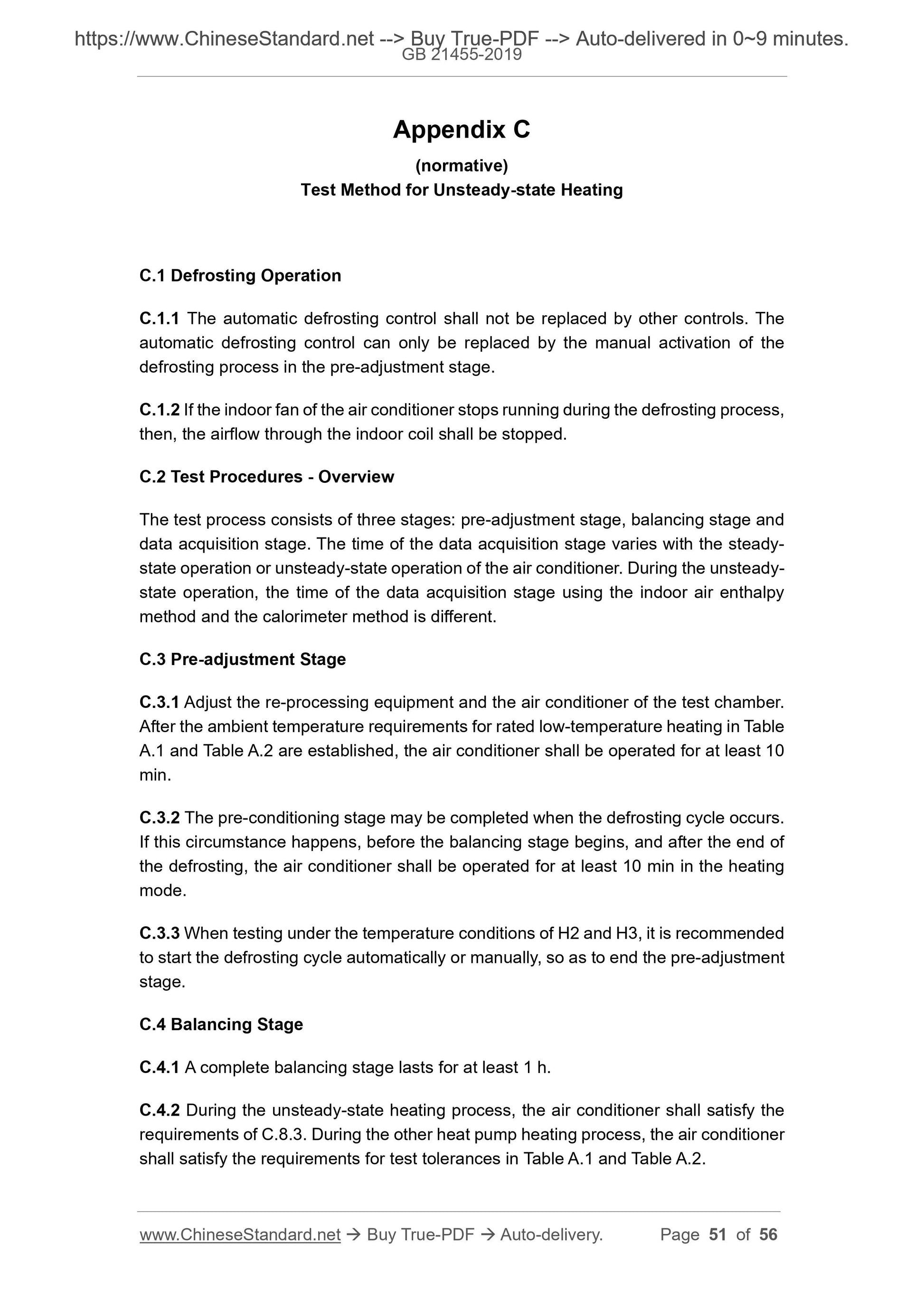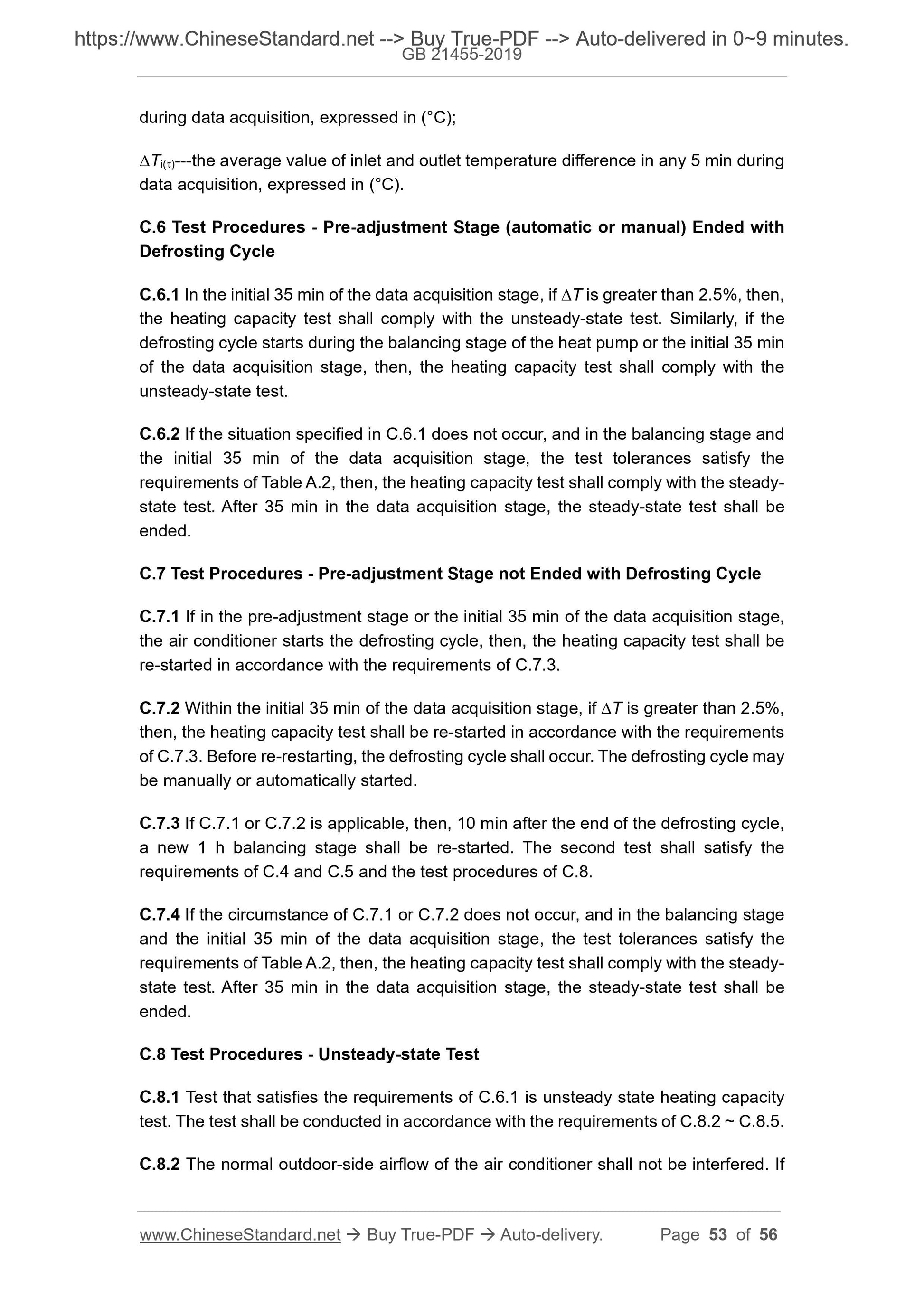1
/
of
11
www.ChineseStandard.us -- Field Test Asia Pte. Ltd.
GB 21455-2019 English PDF
GB 21455-2019 English PDF
Regular price
$285.00
Regular price
Sale price
$285.00
Unit price
/
per
Shipping calculated at checkout.
Couldn't load pickup availability
GB 21455-2019: Minimum Allowable Values of the Energy Efficiency and Energy Efficiency Grades for Room Air Conditioners
Delivery: 9 seconds. Download (and Email) true-PDF + Invoice.Get Quotation: Click GB 21455-2019 (Self-service in 1-minute)
Newer / historical versions: GB 21455-2019
Preview True-PDF
Scope
This Standard specifies the energy efficiency grades, the minimum allowable values ofenergy efficiency and test methods for room air conditioners.
This Standard is applicable to room air conditioners which adopt air-cooled condensers
and fully enclosed electric compressors, and with a rated cooling capacity not greater
than 14,000 W and with a climate type T1, as well as low ambient temperature air
source heat pump air heaters with a nominal heating capacity not greater than 14,000
W.
This Standard is not applicable to mobile air conditioners, multi-connected air
conditioning units and air-duct air conditioners.
Basic Data
| Standard ID | GB 21455-2019 (GB21455-2019) |
| Description (Translated English) | Minimum Allowable Values of the Energy Efficiency and Energy Efficiency Grades for Room Air Conditioners |
| Sector / Industry | National Standard |
| Classification of Chinese Standard | F01 |
| Classification of International Standard | 27.010 |
| Word Count Estimation | 34,346 |
| Date of Issue | 2019-12-31 |
| Date of Implementation | 2020-07-01 |
| Issuing agency(ies) | State Administration for Market Regulation, China National Standardization Administration |
Share
